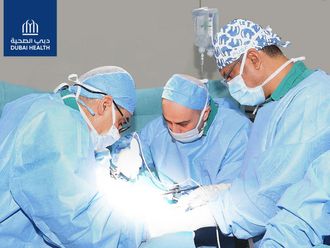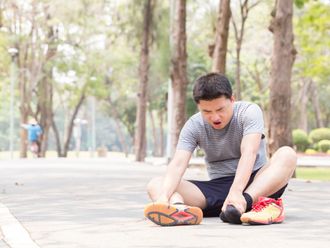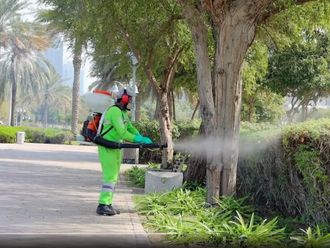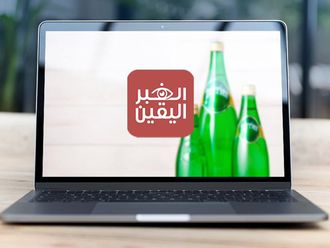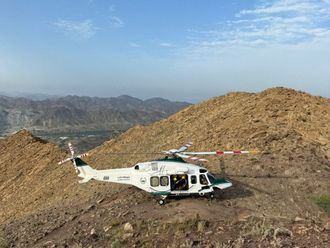Dubai: In a first ever transplant procedure, two young Afghani burn victims who suffered from 45 per cent and 30 per cent burns received an amniotic membrane graft at Rashid Hospital.
a multidsicplinary team of doctors from the hospital carried out the graft after it took several procedures to stabilise the patient. The amniotic membrane was donated by a mother who delivered a baby via C-section at the Latifa Hospital for women and children. The amniotic membrane from the placenta has regenerative powers and is used to accelerate wound care worldwide but this was a first for the UAE.
Providing details about the procedure, Dr Fahd Baslaib, CEO of Rashid Hospital said that the Afghani nationals — Hafizullah and Khayal Mohammad — received those burns trying to heat food using a defective gas cylinder. He added: “Advances in patient care and providing the highest quality of medical services is a priority. The Burns unit at the Hospital has continued to expand its specialised services over the last few years and we are proud of this achievement that paves the way for advanced burn and wound care thereby providing patients with better pain management and accelerated recovery.”
Dr Muna Tahlak, CEO of Latifa Hospital for Women and Children at the DHA, said, “Placental tissues are increasingly being used in wound care and management use to its promising results. We are keen to further develop the use of amniotic membrane in burn and wound care.”
Dr Marwan Al Zarouni, Head of the Burns and Plastic Surgery Unit at Rashid Hospital, said, “Both the patients were the right candidates for this procedure as they are young and the wounds were clean. We contacted Latifa Hospital for Women and Children for a donor for the amniotic membrane.”
Doctors from the Burns unit were present in Latifa Hospital for Women and Children and immediately after the birth of the baby; the discarded placenta was used to obtain the amniotic membrane. Only amniotic membrane extracted from a woman who undergoes C-section can be used, said Dr Zarouni as the membrane has to be sterile for prevention of any infection. Doctors disinfected the membrane, which is a thin film and needs precise technique to collect it. The membrane was cut into strips, disinfected and stored in sterile containers and was kept in a medical refrigerator.
Rashid Hospital is one of the few hospitals in the country that has a dedicated Burns unit that follows international best practices.
How is Amniotic membrane graft carried out?
Generally in burn cases skin graft procedure is performed with the patient’s own skin harvested from other sites. However, of late amniotic membrane graft is gaining popularity. It is used to regenerate and heal the skin on site of the wounds. The amniotic membrane surrounds the placenta and protects the developing foetus in the uterus and separates the mother and the foetus. At birth, the placenta separates from the wall of the uterus and is expelled from the body. The mother and child no longer require the placenta to facilitate nutrient transport and pregnancy after birth.
This membrane causes rapid healing, reduces pain and possibility of bacterial infection considerably thereby accelerating the healing process.
Dr Al Zarouni said: “Here are many benefits of using amniotic membrane. It helps in pain management, which is critical for patients with burns and deep wounds. If it matches genetically, it becomes part of the body or else it does the work of pain management, increases and enhances the wound healing process and then it falls off. The membrane is rich in nutrients, reduces inflammation, has antibacterial properties, is non-immunogenic (will not be seen as foreign material) and it reduces scar tissue formation. All these properties make it ideal to promote wound healing.”
The medical team at Rashid Hospital burn unit conducted the amniotic membrane graft procedure on Hafizullah on June 26. Both his legs had deep burns and those areas were selected for the graft. Later on June 30, the second patient, Khayal Mohammad, underwent the procedure for his chest and upper arm said Dr Al Zarouni.
He said, “the amniotic membrane was used instead of skin grafting in deep burn areas. We had sufficient membrane to cover these areas for both patients. Since membrane can only be stored for 14 days, we had to discard the rest. The areas where the membrane was grafted showed faster healing.
Patients Hafizullah and Mohammad were discharged earlier this week. Recounting his nightmare Hafizullah said: “I lost consciousness by the time I was admitted. It was just terrible; we were in so much pain. When I woke up, I realised I was in the hospital. I prayed and left it all to Allah, to his will. I cannot thank the doctors at the hospital enough. They took great care of us; we have received a new lease of life.”


